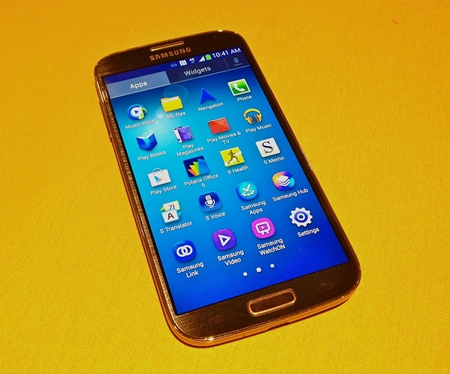A few years ago, I never thought I would be writing about the various merits (or otherwise) of the images produced by mobile phones. I am old enough to remember the first mobile phones, which came in a medium-sized suitcase and one had to be a body builder to be strong enough to carry it! And it certainly did not take photos.
The mobile phone revolution began in earnest when the BlackBerry came on the market, but it was very quickly superseded by a plethora of phones from Nokia and the Apple iPhone ranges. Today you must have an iPhone 5 or a Samsung Galaxy S4 to be in the fashion conscious hunt.

Now, even though the Apple and the Samsung have many features in common with their operating systems, which allows them to be thought of as mini computers (which indeed they are) where you can download applications (now called ‘apps’) and play games and even find your way with GPS coordinates beamed down from above, through the phone. You can even use some phones as a speedometer, with the satellite measuring your time versus distance.
However, how good are they as far as their photographic abilities are concerned? Have they now supplanted the compact camera, just as digital photography overtook film?
To be able to compare the different smartphones is really beyond the ambit of this column; however, some well reasoned comparisons have been done elsewhere, and I have leaned heavily on the work that has been done throughout the world.
For recording images, Samsung and Apple have taken different approaches to the set-up in “native” (no camera apps) form. Samsung provides the controls found on a compact camera, including ISO speed, white balance, metering, face detection selection and image stabilization. Apple assumes that a camera phone is strictly point and shoot, and user controls, apart from the choice of HDR, are pointless.
A comparison test of the Samsung and iPhone and the HTC One S, was carried out in Australia.
The specifications say much, with the Samsung having a 13 megapixel sensor and an f2.2 lens of 31 millimeter equivalent focal length. The iPhone has eight megapixels and an f2.4, 33 millimeter lens. The HTC has eight megapixels and a 28 millimeter f2 lens. The Samsung has the largest, highest-resolution screen and the iPhone the smallest, but nevertheless brilliant, retina display. The iPhone is nicer in the hand.
The testers felt that the HTC was outclassed by the two more expensive phones. The Samsung showed an acceptable evidence of noise reduction when viewed at full image size. The eight megapixel iPhone shows slightly less noise degradation than the 13 megapixel Samsung. Both auto-selected very low ISO speeds in the test – 50 and 80. The iPhone produced the most pleasing colors, particularly skin tones, but even moderate highlights were blown out.
The Samsung and Apple camera phones performed well and are always with you, but are they better than a good point and shoot?
A direct comparison was made with the very small Canon N. This is a 12 megapixel camera with a stabilized 28-224 mm lens and is clearly intended to go head to head with smartphone cameras. Its square face area is slightly less than a credit card but it is quite thick at 29 mm and surprisingly heavy. The swiveling LCD adds to the thickness. Like the smartphones, the Canon N is largely touch-screen operated, including focus and fire by touch. There is also a shutter ‘’button’’, an outer ring around the lens, which is concentric with the zoom control ring and must be pushed down – not easy to navigate. The camera can be used upside down with the shutter release pushed from either top or bottom.
The testers agreed at the N surpasses phone cameras on all counts except one – the always-with-you feature. The image quality is better than the phone cameras, owing to the larger sensor and true optical zoom lens. At ISO200, noise reduction effects (smudging) are noticeable but resolution and sharpness are reasonable. Movie quality is good. The Canon N is a beautifully made camera that takes decent pictures. But of course, you can’t receive phone calls on it.




